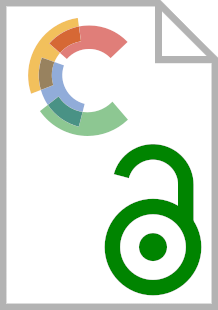| dc.contributor.author | PACHO ALJANATI, Lucie | |
| dc.date.accessioned | 2018-12-04T13:15:36Z | |
| dc.date.available | 2018-12-04T13:15:36Z | |
| dc.date.issued | 2018 | |
| dc.identifier.citation | European journal of legal studies, 2018, Vol. 10, Special issue, pp. 5-46 | en |
| dc.identifier.issn | 1973-2937 | |
| dc.identifier.uri | https://hdl.handle.net/1814/59865 | |
| dc.description.abstract | This study addresses an essential characteristic of the EU legal order: its legislation is multilingual and equally authentic in all language versions. In this paper, I use corpus analysis to examine the issue of divergences between language versions that come to light in EU case-law. This paper pursues three specific objectives: 1) to study the use of comparison between language versions by the Court of Justice of the European Union (CJEU), 2) to consider the methods of interpretation that the CJEU applies when considering multilingualism, and 3) to delve into the types of divergences and try to elucidate whether they can be attributed to translation problems. This applied study helps to shed light on the implications multilingualism has for the creation and interpretation of EU law. In order to understand how legal translation and interpretation. This study addresses an essential characteristic of the EU legal order: its legislation is multilingual and equally authentic in all language versions. In this paper, I use corpus analysis to examine the issue of divergences between language versions that come to light in EU case-law. This paper pursues three specific objectives: 1) to study the use of comparison between language versions by the Court of Justice of the European Union (CJEU), 2) to consider the methods of interpretation that the CJEU applies when considering multilingualism, and 3) to delve into the types of divergences and try to elucidate whether they can be attributed to translation problems. This applied study helps to shed light on the implications multilingualism has for the creation and interpretation of EU law. In order to understand how legal translation and interpretation actually work in the EU, I adopt a reasoned approach to face the challenges posed by the multilingual architecture of EU law, a new way of thinking that considers linguistic issues as important as legal issues.n actually work in the EU, I adopt a reasoned approach to face the challenges posed by the multilingual architecture of EU law, a new way of thinking that considers linguistic issues as important as legal issues. | en |
| dc.format.mimetype | application/pdf | en |
| dc.language.iso | en | en |
| dc.publisher | European University Institute | en |
| dc.relation.ispartof | European journal of legal studies | en |
| dc.relation.uri | https://ejls.eui.eu/ | en |
| dc.rights | info:eu-repo/semantics/openAccess | en |
| dc.title | Conference articles : multilingual EU law : a new way of thinking | en |
| dc.type | Article | en |
| dc.identifier.volume | 10 | en |
| dc.identifier.startpage | 5 | en |
| dc.identifier.endpage | 46 | en |
| eui.subscribe.skip | true | |
| dc.identifier.issue | SI | en |
